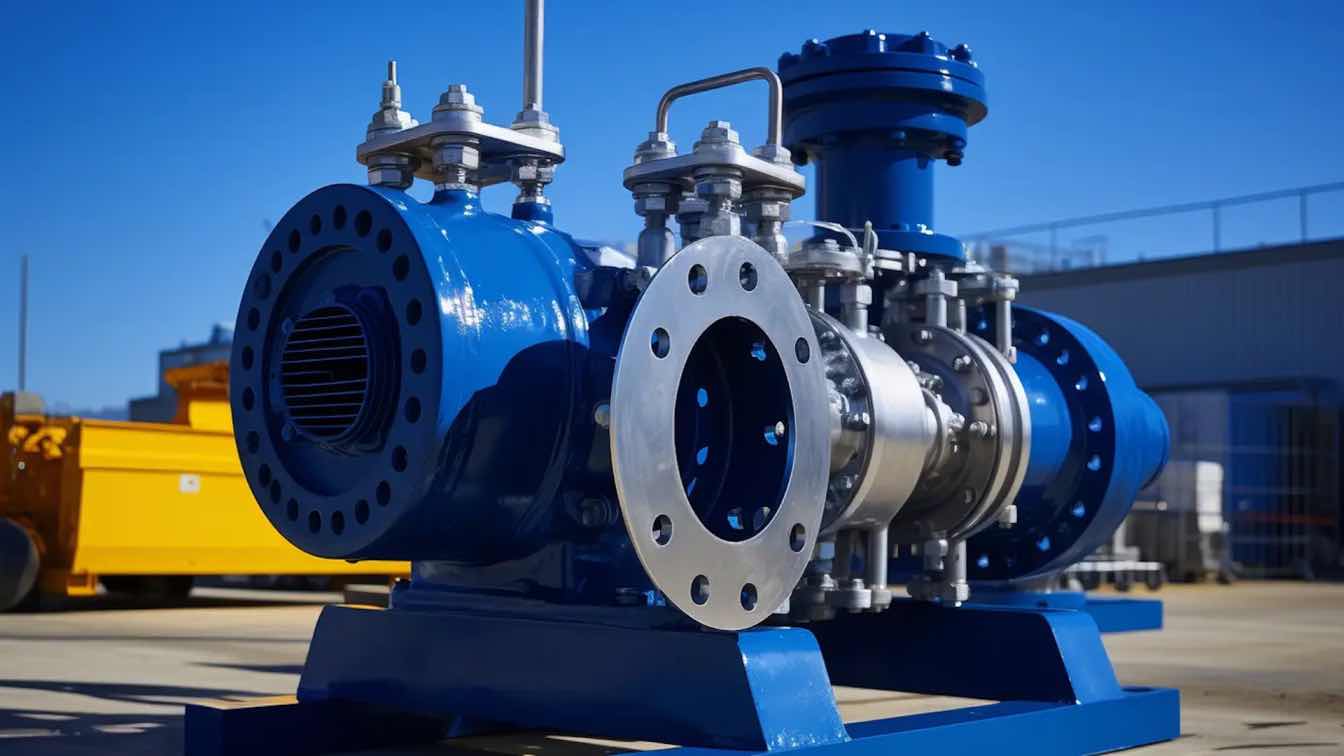Introduction
Construction sites are complex environments where various systems must work in sync to keep operations running smoothly. From site preparation and excavation to structural work and finishing, one often-overlooked element that plays a critical role in supporting these stages is the use of industrial pumps. These pumps are essential for moving water, slurry, chemicals, and other fluids throughout a project, ensuring that sites stay safe, efficient, and on schedule.
Managing Water Accumulation
One of the most common applications of industrial pumps on construction sites is construction site dewatering. During excavation, especially in areas with a high water table or unpredictable weather, water can collect quickly, leading to delays, safety risks, or foundation damage.
Industrial pumps are used to dewater these areas by efficiently removing water and redirecting it away from critical structures. Whether using submersible pumps or surface-mounted units, the goal is to keep work zones dry so construction can continue without interruption. In deep foundation work, such as piling or trenching, maintaining a dry environment is not just convenient—it’s necessary for structural integrity and worker safety. Efficient construction site dewatering helps avoid erosion, reduces downtime, and keeps equipment functional.
Supporting Concrete and Grout Work
Pumping applications go beyond water removal. Industrial pumps are also used to transport concrete, grout, and other dense materials from mixing stations to the point of use. In large-scale projects where manual transport is impractical, these pumps allow for a steady and controlled flow of materials over long distances or vertical heights. This is where a concrete pumping system becomes vital.
These systems are particularly valuable for high-rise construction, tunnel work, or confined spaces where accessibility is limited. By automating the delivery of thick materials, construction crews can reduce labor, increase speed, and improve placement accuracy—ultimately enhancing the overall quality of the build. A reliable concrete pumping system also ensures consistent mixture flow, reducing material waste and delays.
Handling Sludge and Slurry
Many civil engineering and infrastructure projects involve working with sludge or slurry—mixtures of solids and liquids that are difficult to move with standard equipment. Industrial pumps designed for handling abrasive or viscous fluids are ideal in these scenarios.
Whether it’s moving bentonite slurry used in drilling or removing sediment-laden water from a construction pit, these pumps ensure material flow is consistent and controlled. Projects involving tunneling, roadwork, or dam construction rely on specialized slurry handling equipment to manage these thick mixtures without clogging or wear.
By integrating slurry handling equipment into their workflow, contractors can maintain productivity while meeting environmental and safety standards. These systems are engineered to manage highly abrasive content while reducing maintenance needs and extending equipment life.
Fire Protection and Dust Suppression
Construction sites must adhere to strict safety standards, including fire prevention. Industrial pumps are often used as part of temporary fire suppression systems, supplying water to hydrants, sprinklers, or hose lines where permanent systems are not yet installed.
In addition, dust control is a daily challenge, especially in dry or windy conditions. Water pumps fitted with spray nozzles can be used to dampen roads, excavated material, or stockpiles, helping reduce airborne particles that pose respiratory risks and visibility issues.
Fuel and Chemical Transfer
On larger job sites, transferring fuel, lubricants, or chemical additives safely is essential. Industrial pumps designed for chemical compatibility are used to handle these materials with minimal risk of spillage or contamination. For example, diesel or hydraulic fluid can be pumped to equipment stations, generators, or mixing tanks as needed.
This minimizes downtime for refueling and improves overall site logistics, especially in remote areas where access is limited and efficiency is vital. Proper use of pumps also helps reduce manual handling of hazardous materials, promoting a safer work environment.
Foundation and Geotechnical Applications
In geotechnical construction, such as ground stabilization or soil injection, pumps are used to inject resins, cement-based mixtures, or other stabilizing agents into the subsurface. These operations help improve load-bearing capacity, reduce settlement, and prepare the ground for heavy structural loads.
Here, both slurry handling equipment and a concrete pumping system are often used together to deliver precision-mixed materials into the earth. Without these tools, soil stabilization and ground improvement methods would be far less effective and much more labor-intensive.
Adaptability on the Job Site
Another advantage of industrial pumps in construction is their adaptability. From skid-mounted diesel-powered pumps to trailer-mounted electric units, these systems can be customized based on site conditions, project size, and fluid type.
Whether it's a remote bridge build requiring construction site dewatering or an urban high-rise project that needs a sophisticated concrete pumping system, there is a configuration that fits. This flexibility allows contractors to choose the right equipment for each task, improving operational efficiency and reducing delays.
Conclusion
While they may not always be in the spotlight, industrial pumps are fundamental to modern construction. Their ability to move water, slurry, concrete, fuel, and chemicals efficiently makes them indispensable tools for staying on schedule and maintaining site safety.
With the right slurry handling equipment, concrete pumping system, and construction site dewatering solutions in place, construction teams are better equipped to manage the physical and environmental demands of complex projects. These systems not only support the core construction phases but also contribute to long-term structural stability and job site efficiency.





